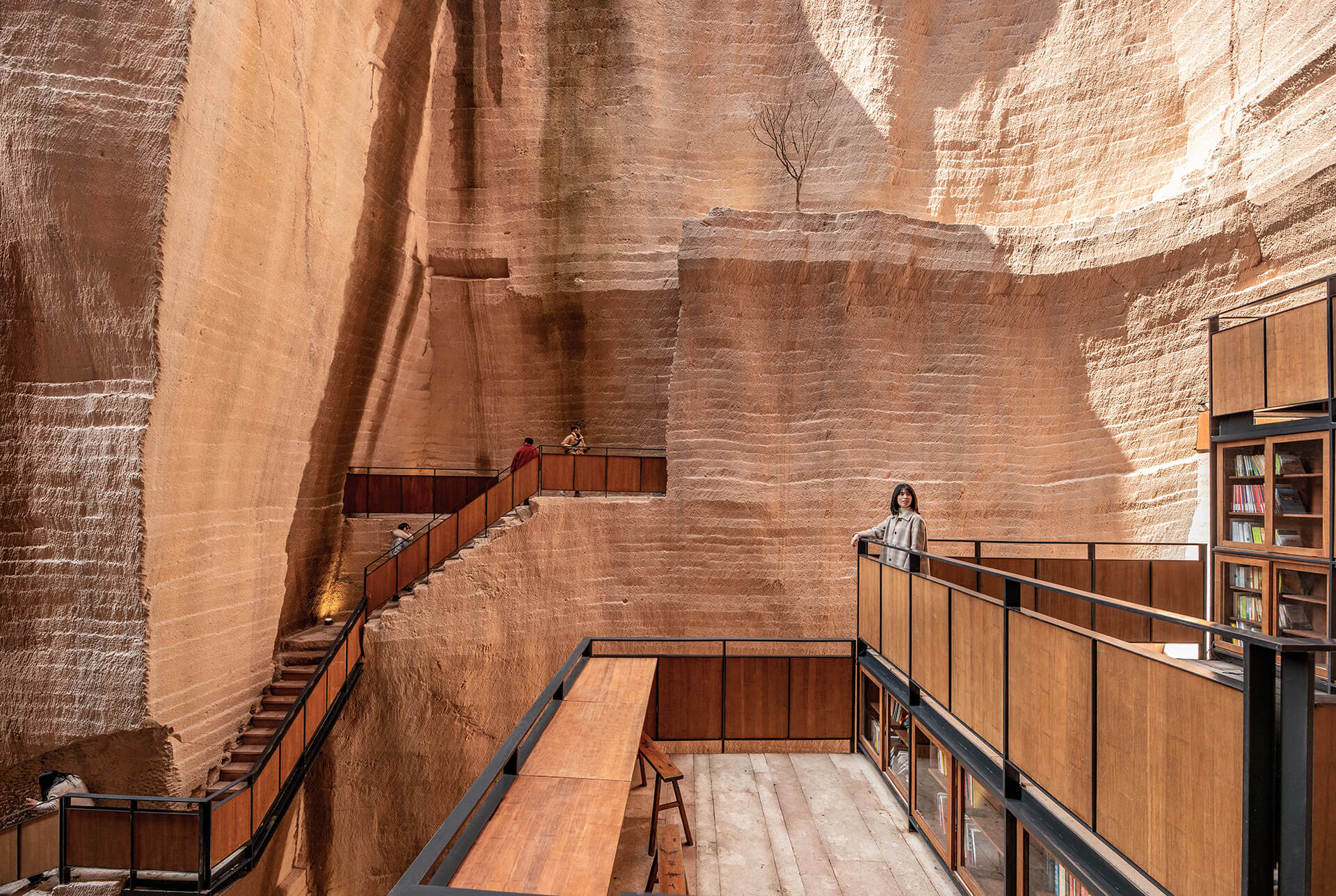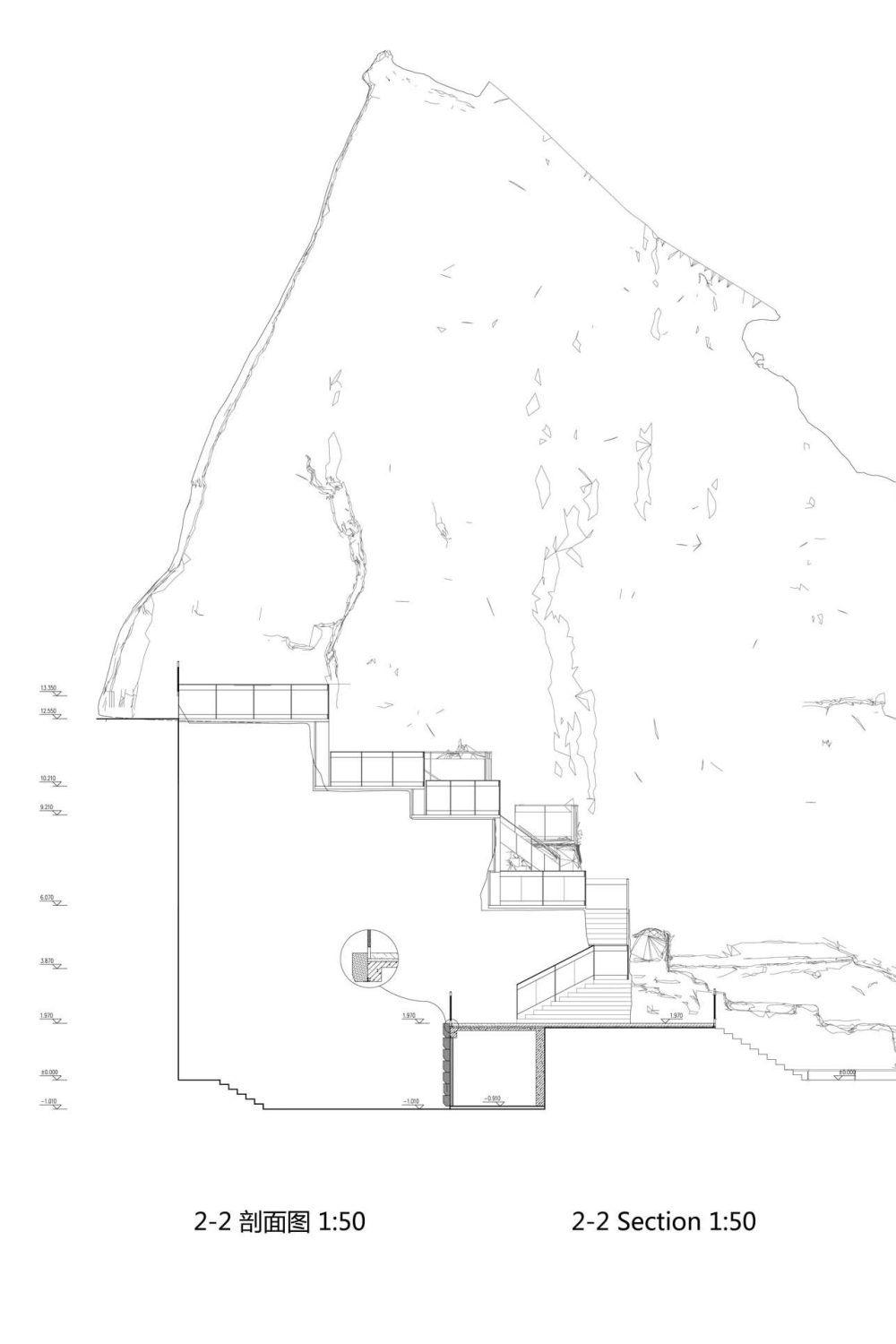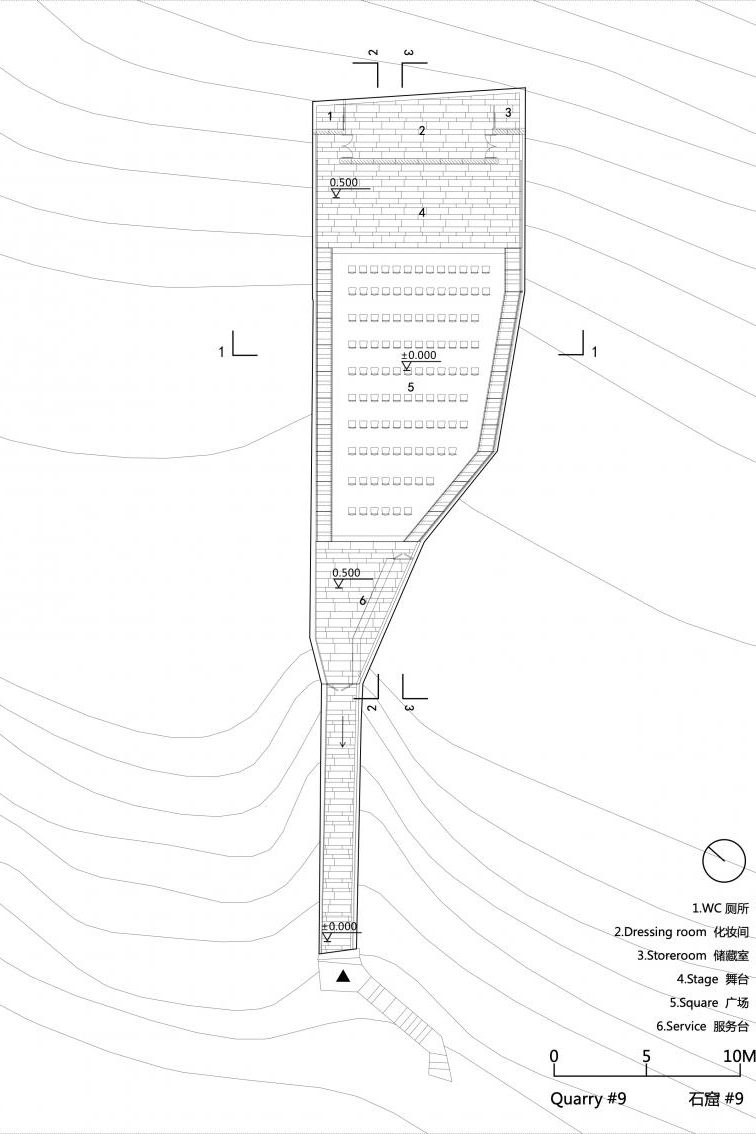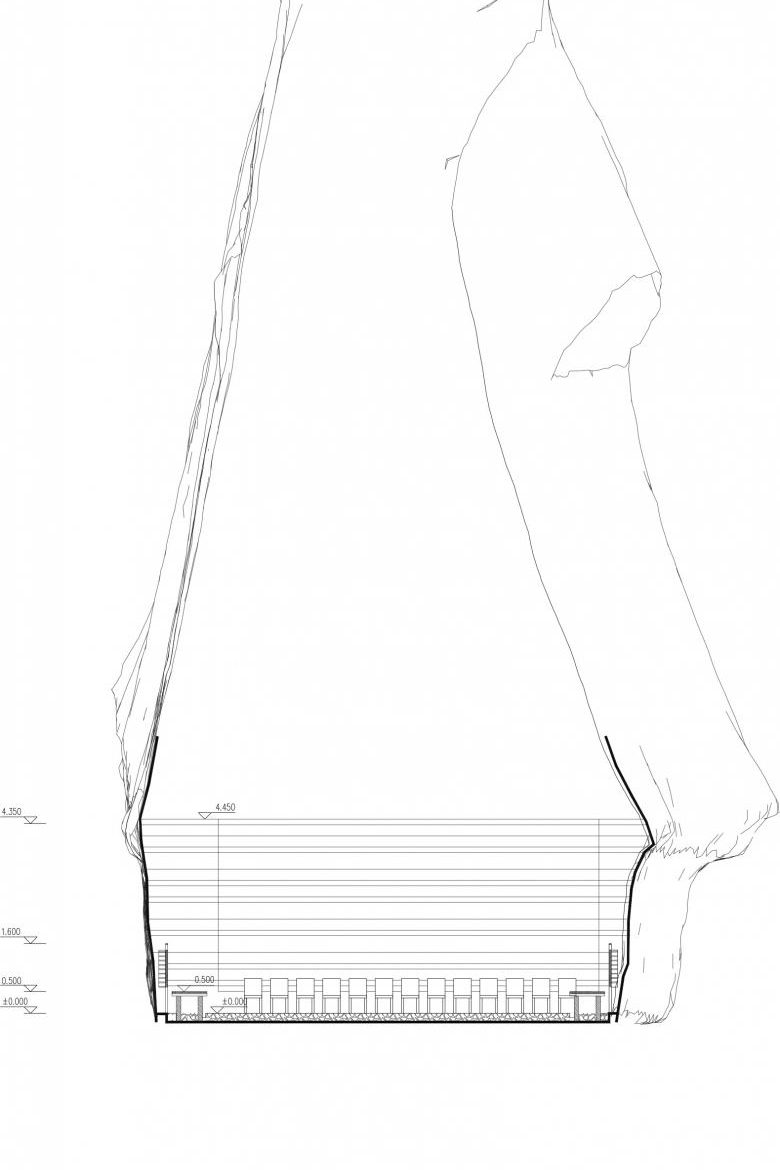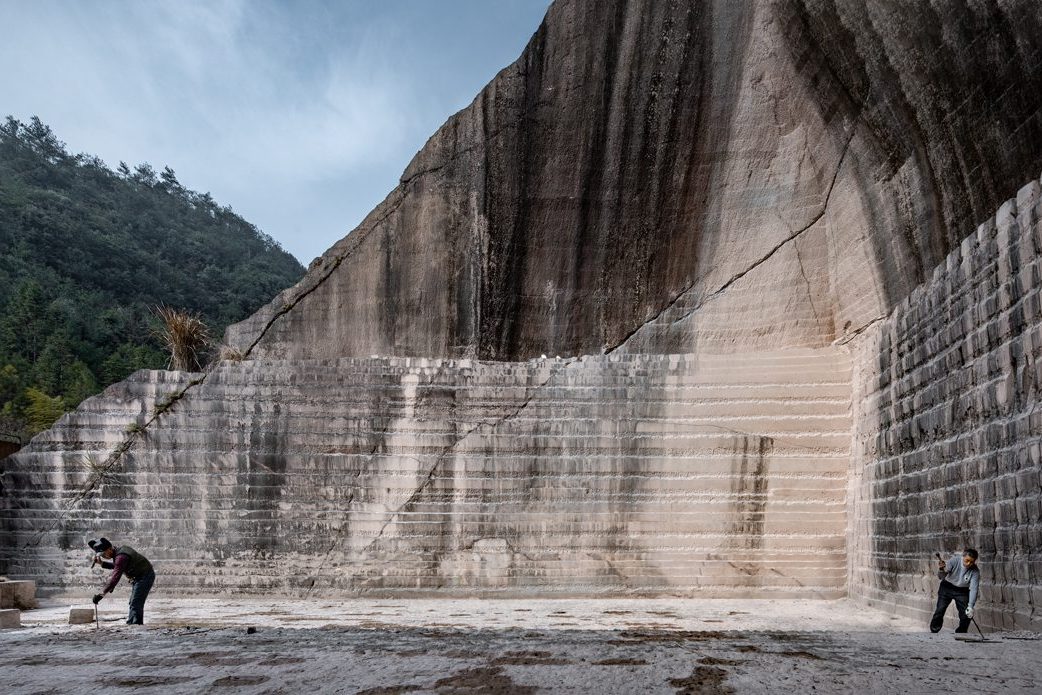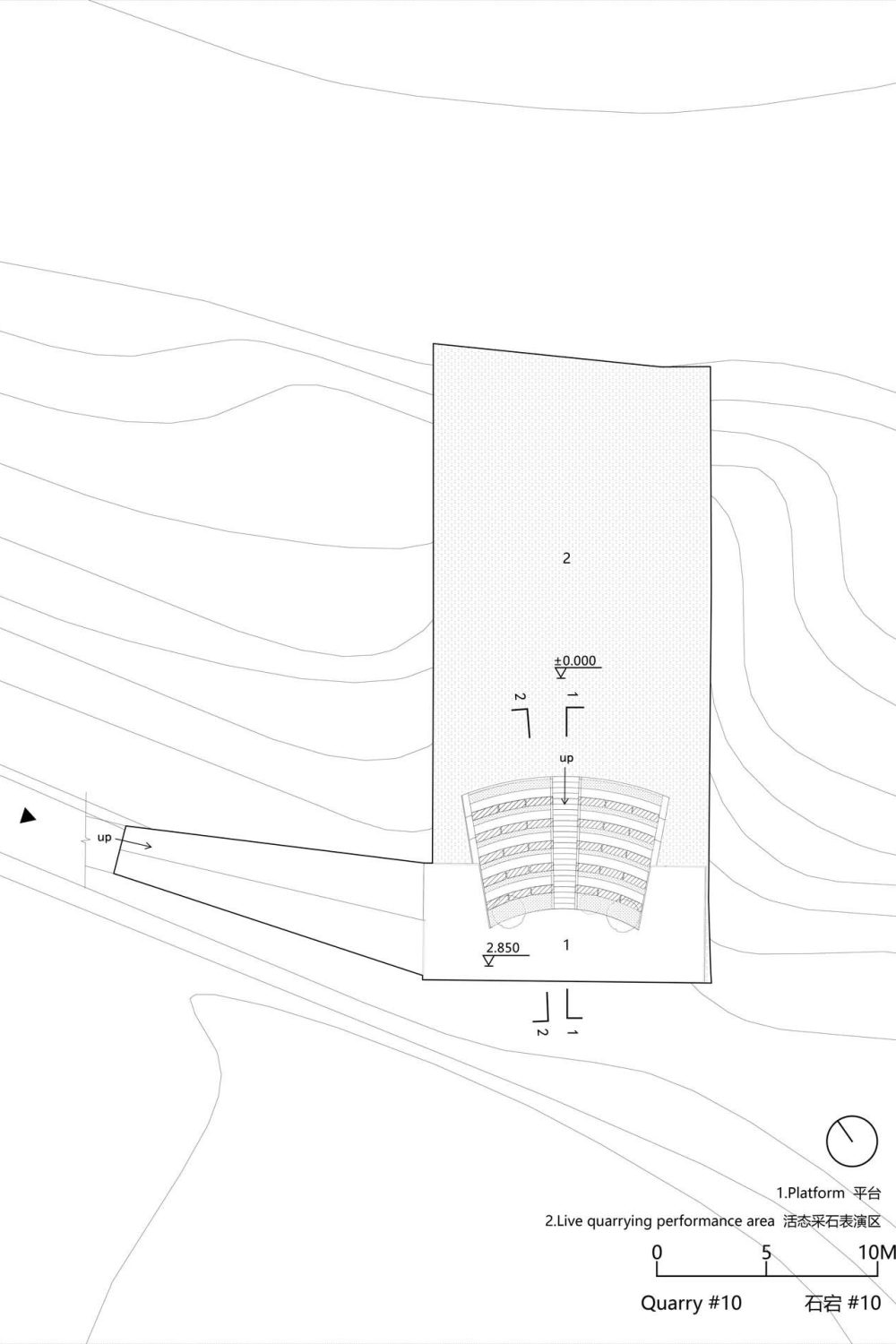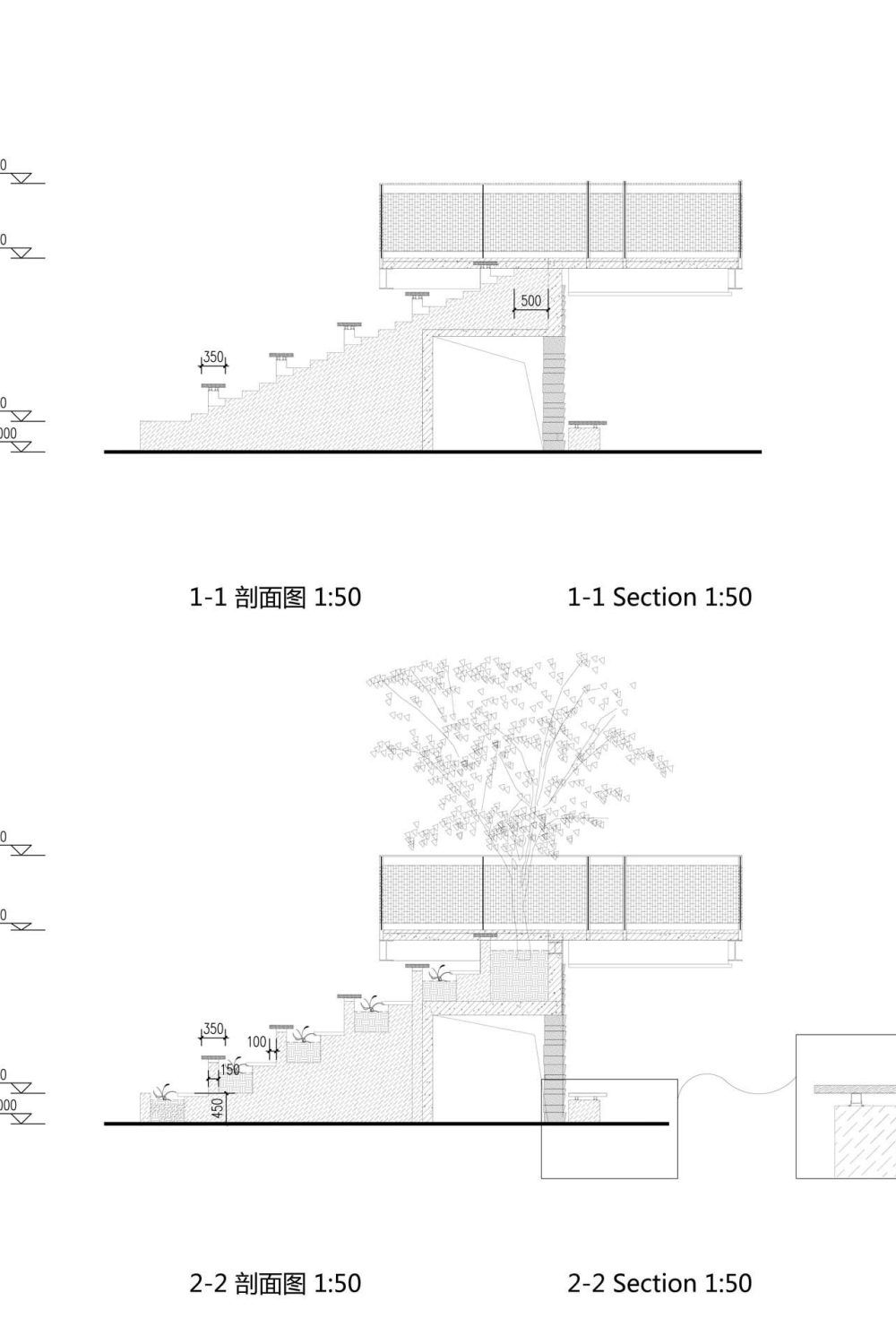DNA_DESIGN AND ARCHITECTURE REVITALIZES 9 ABANDONED STONE QUARRIES BY TRANSFORMING THEM INTO CULTURAL SPACES THROUGH REFURBISHING AND TRANSFORMING THE EXISTING SITE INSTEAD OF CONSTRUCTING AN ENTIRE NEW BUILDING, ALLOWING THE ARCHITECTURE TO TELL THE STORY OF HAND-MINING CULTURE BY ITSELF
TEXT: PRATCHAYAPOL LERTWICHA
PHOTO: DNA_DESIGN AND ARCHITECTURE
(For Thai, press here)
Surrounded by the stunning mountainous landscape, Jinyun county in China’s Zhejiang province is known for its hand-mining stone quarries, which had been the main source of income for the people of Jinyun for over a thousand years, and is now considered as the area’s treasured local culture. The changes in local economy and society caused the local population to choose different professions, leaving the ubiquitous quarries either deserted or used for chicken farming and fish ponds.
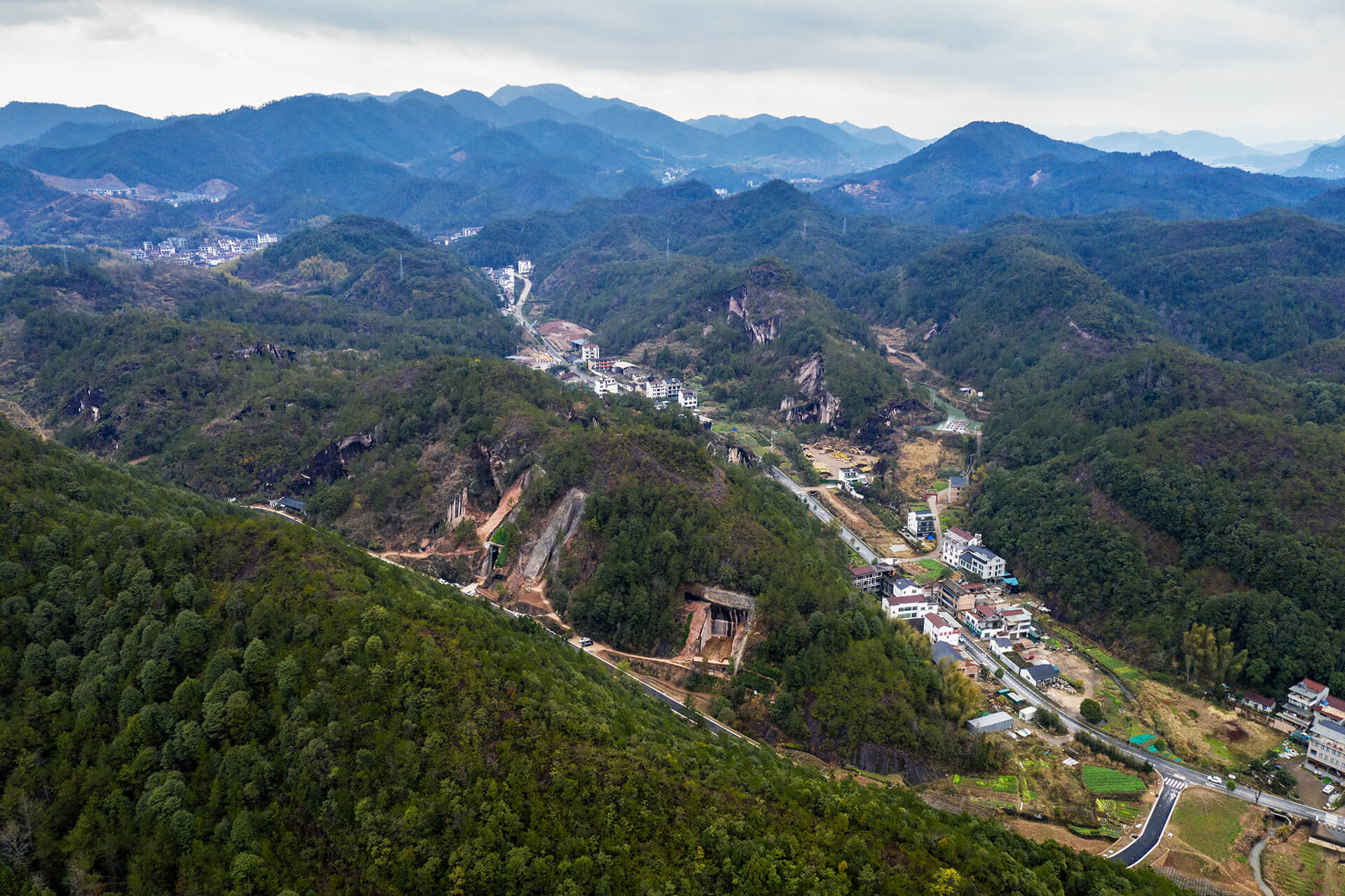
When Jinyun was planning its economic regeneration, the county invited Chinese architecture firm, DnA_Design and Architecture, to work out a way to develop nine out of over three thousand abandoned stone quarries into attractions that would help boost the local economy all the while preserving the long-standing hand-mining culture.


The plan that DnA_Design and Architecture came up with is to transform the old stone quarries into cultural spaces such as a library, performance space or hang out spot that welcome both locals and tourists. The studio’s design approach centers around the transformation of the existing quarries through an addition of few elements and refurbishment instead of constructing entirely new built structures. Such an approach follows the architecture team’s attempt to shy away from the preceding development plans adopted by rural communities in China where ‘over-designing’ ends up creating Disneyland-esque attractions.
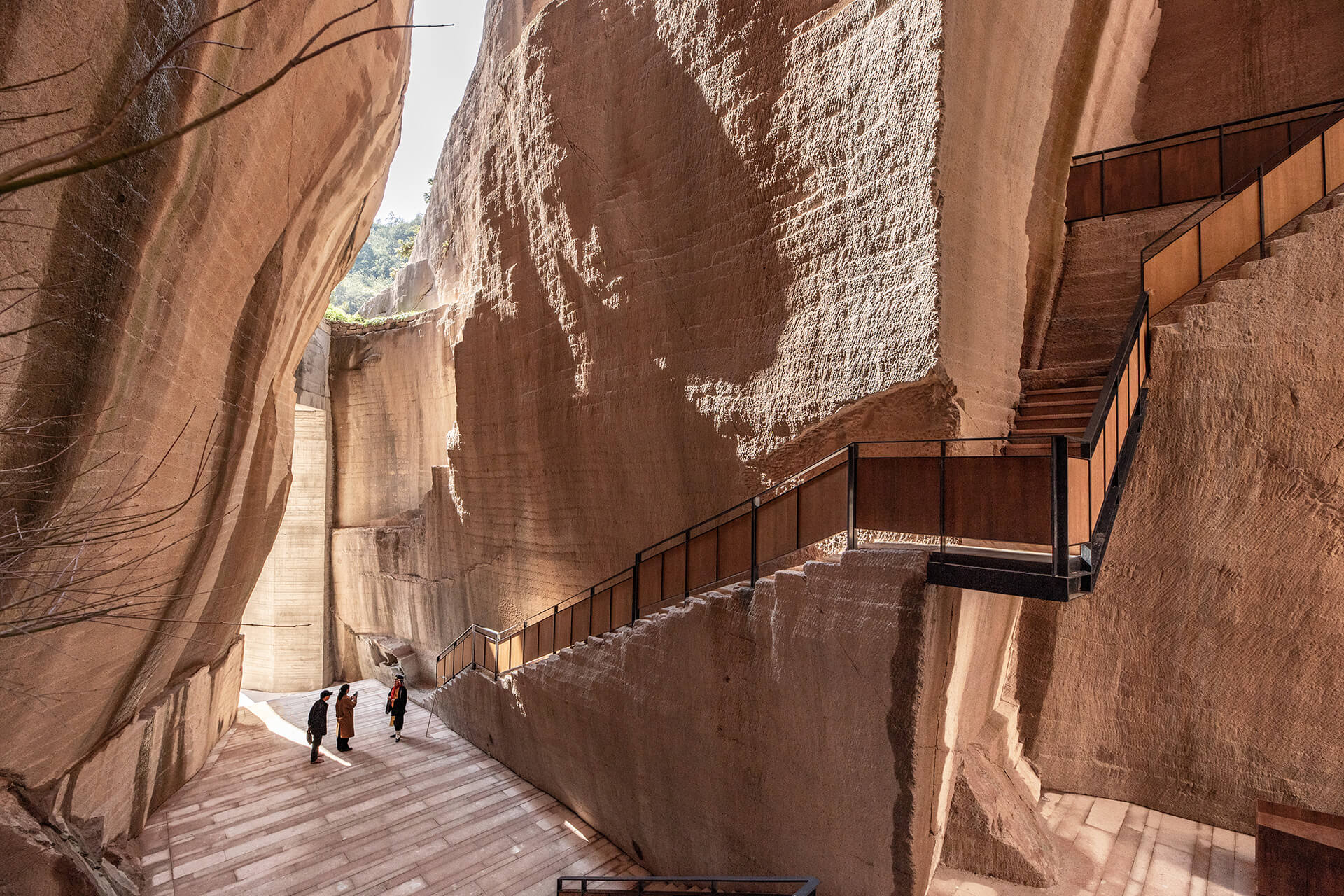
Jinyun Quarries 8
Up until now, three out of nine stone quarries under DnA_Design and Architecture’s regeneration plan have already completed construction. The studio repurposed Quarry 8 into a library by turning existing walkways, steps and platforms once used by miners into reading spaces with beautifully designed lighting, bookshelves and seating as well as railing whose wooden patterns blend beautifully into the quarry’s orange-brown stone.

Jinyun Quarries 8
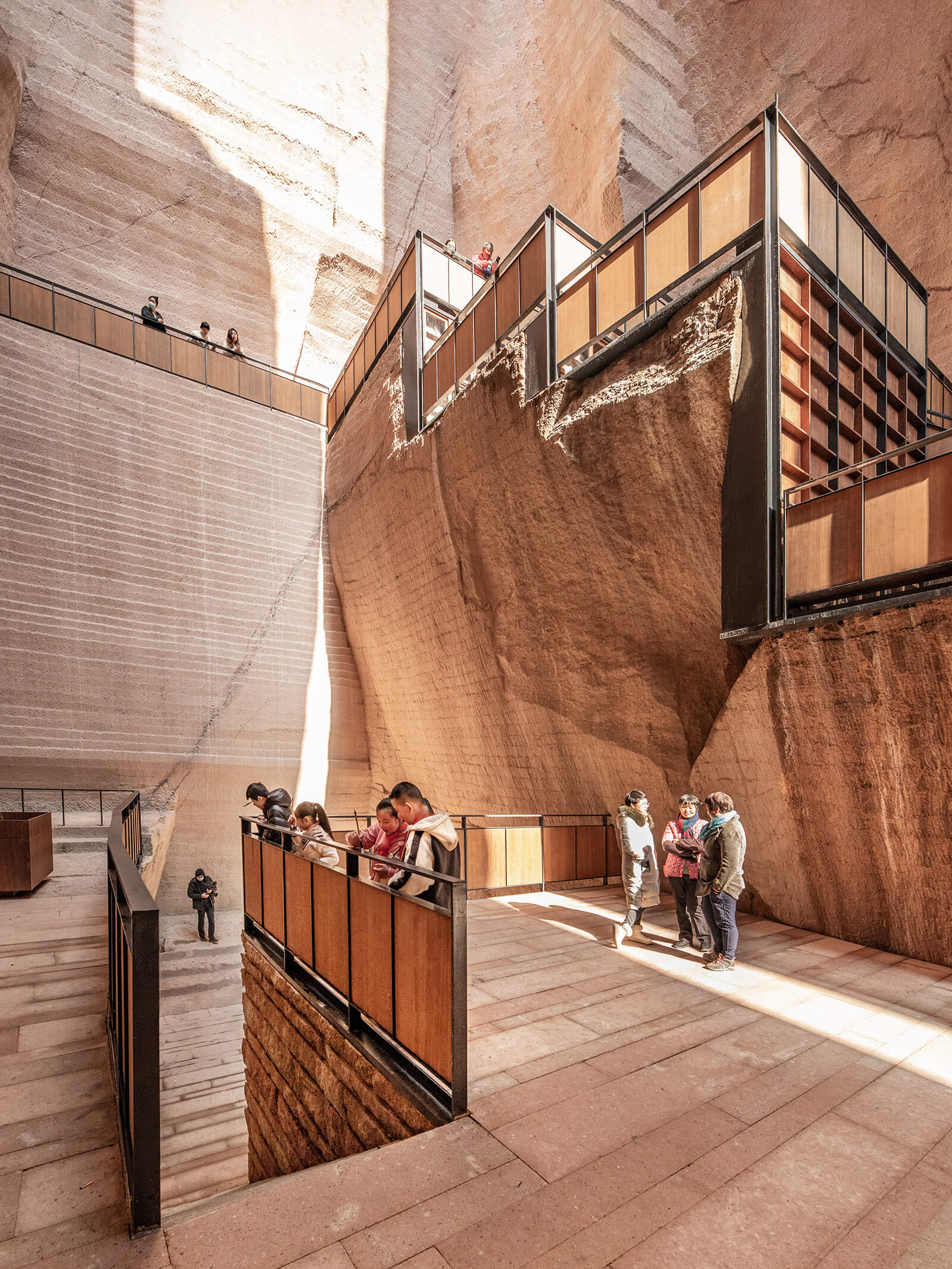
Jinyun Quarries 8
The cavernous form of its tapering walls, which grant the acoustic properties, makes Quarry 9 an ideal performance space. Hidden at the back of the railing of the sunken seating area is acoustic material that absorbs noises and minimizes echoes inside the chamber.
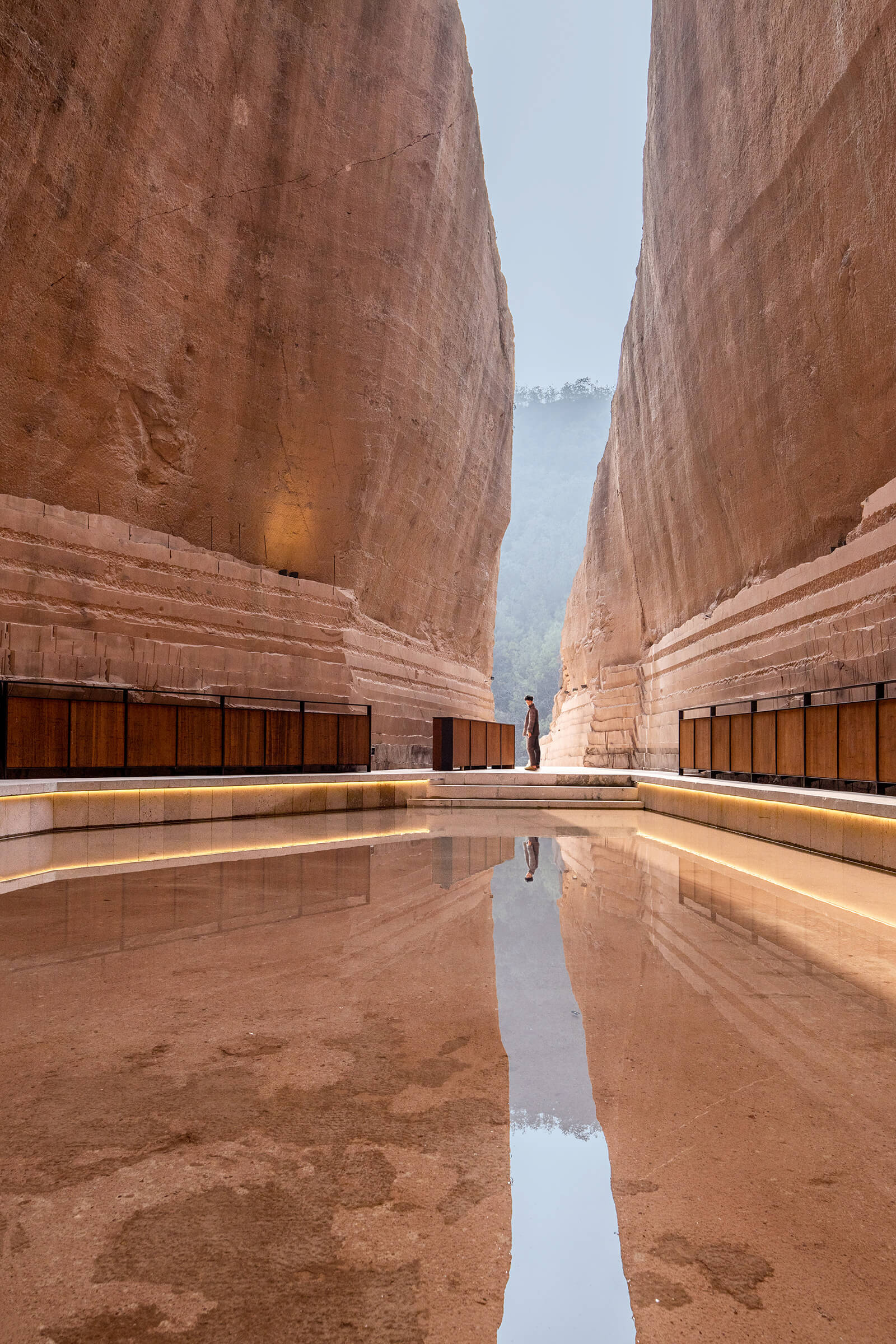
Jinyun Quarries 9

Jinyun Quarries 9
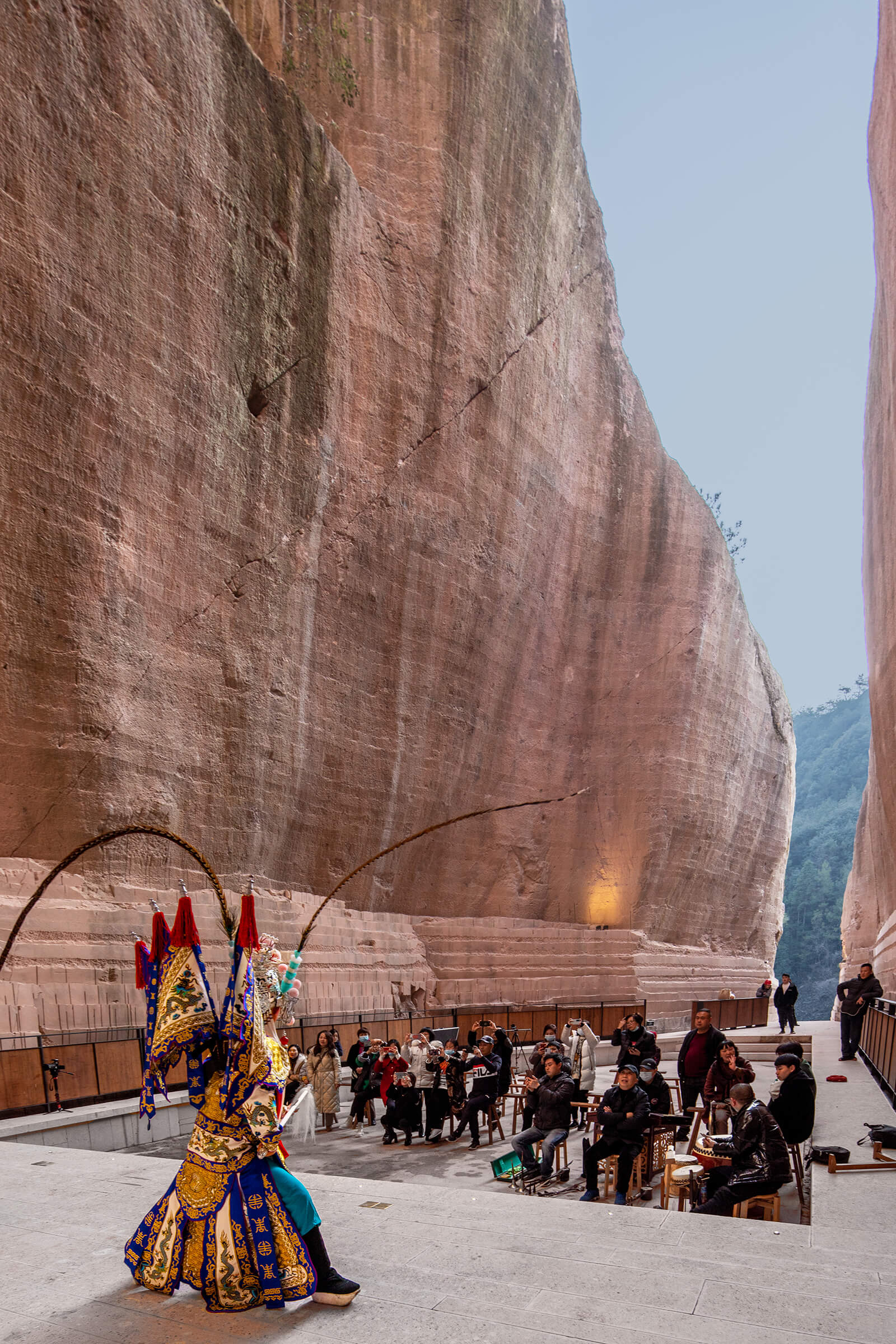
Jinyun Quarries 9

Jinyun Quarries 9
Last but not least is Quarry 10 where the process of ancient hand quarrying is exhibited. The architecture team designs an amphitheater for viewers to sit and view the mining process. The entrance is built with an additional functionality that helps reinforce the strength of the quarry’s natural stone walls.
Apart from the other six quarries waiting to be revived, the project is planning to build a tourist information center, restaurants and a garden that will be an interesting source of knowledge of the area’s indigenous plants. The program will be a part of the walkway that connects all the nine quarries together. Once everything is completed, we will get to see the great quarries of Jinyun being brought back to life, reminiscing their past glory days with a new, exciting chapter.

Jinyun Quarries 9

